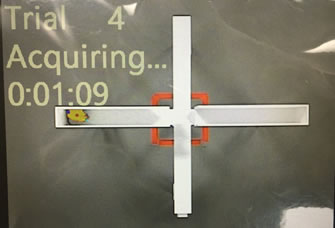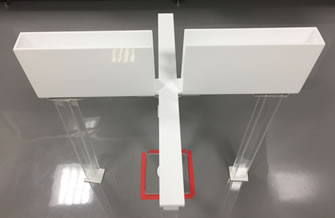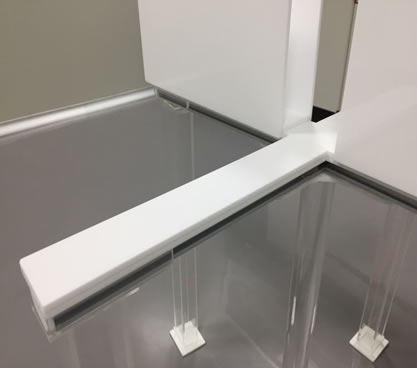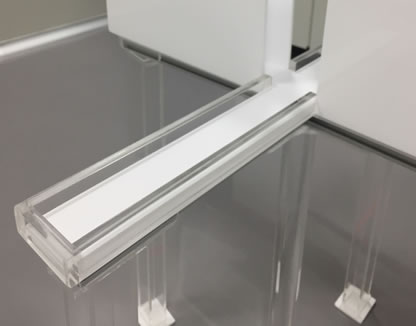Elevated plus maze
Elevated plus maze (EPM) is one of the most widely used equipment for measuring anxiety-related emotional and behavioral changes and it can be used to examine the phenotypes, emotion-related drug effects and neuropsychologyical disorders. EPM is performed on a plus-shaped apparatus, which is elevated 50 cm above the ground, with two closed arms (30 x 5 cm, wall 20 cm) and two open arms (30 x 5 cm). Animals face approach-avoidance conflict when exploring the EPM and they show approach and avoidance behaviors toward the closed and open arms, respectively. The video-tracking (EthoVision XT) is used to track the traveling distances, cumulative duration, and frequency into the closed and open arms during the 5 min EPM experiment.
In order to increase the validity and the application of the EPM, TMC offers two versions of open arm (with or without ledge). During the 5 min experiment, animal normally spend more than 60% of time in the closed arms and less than 25% in the open arms with ledges. On the other hand, animals spend most of the time lingering in the closed arms (>90 %) compare to the open arms with no ledges. These two versions of EPM can detect the anxiogenic and anxiolytic effect of experimental manipulations more precisely.
|
|
|
|
Reference
Walf, A. A., & Frye, C. A. (2007). The use of the elevated plus maze as an assay of anxiety-related behavior in rodents. Nature protocols, 2(2), 322.




